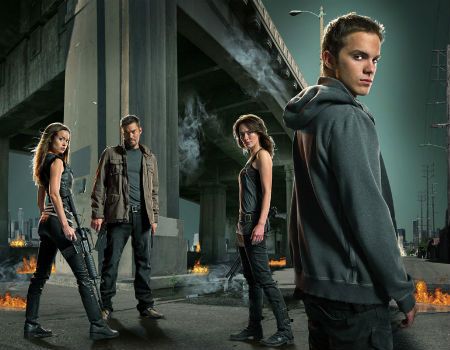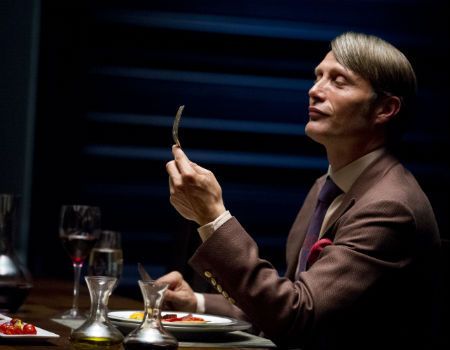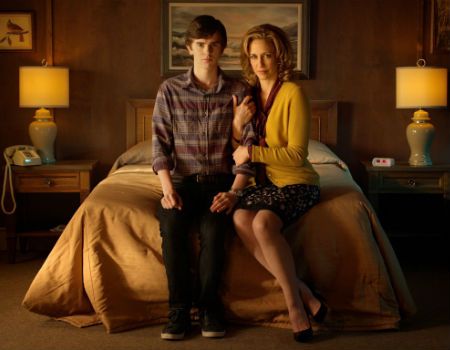
Film and television are two very different mediums. What works when crafting the perfect theatrical film will likely not work when crafting the perfect episode of a TV series.
That said, people still manage to get the translation from big to small screen right every now and then, sometimes to a degree where the adaptation becomes just as famous and well-regarded as the work from which it spawned. In more extreme cases, the televised adaptation can even go on to eclipse its progenitor, to the point where future audiences may not even realize that the show they love started as a movie.
So, with the current onslaught of big to small screen adaptations coming our way (Ghost, American Psycho, From Dusk Till Dawn, Rambo, etc.), we thought it would be a good idea to highlight 10 examples of film to TV transcendence.

The Odd Couple focuses on two very different divorced men that share an apartment in Manhattan. It began life as a 1965 Broadway play by Neil Simon, which then became a 1968 film starring legendary actors Jack Lemmon and Walter Matthau.
Due to the film’s box office success, ABC chose to bring the duo of uptight Felix Ungar and sloppy Oscar Madison to its air in 1970. Now starring Tony Randall and Jack Klugman, the series quickly became a critical darling, although it didn’t draw the ratings to match.
The Odd Couple may today be considered one of the greatest sitcoms ever, but it was canceled multiple times, only to be revived later. A total of 5 seasons were produced, and Randall and Klugman’s portrayals of Felix and Oscar are now generally considered the definitive renditions of the characters.

Revolving around the lives of an army medical unit during the Korean War, M*A*S*H started out as a 1970 film by Robert Altman. Starring such luminaries as Donald Sutherland and Elliott Gould, the film had a very biting sense of dark humor, and was as much a drama as it was a comedy.
When it came time to bring M*A*SH* to TV, the harsh satirical edge of the humor was lessened, and the characters made more likable. The series went on to run for over a decade, becoming a cultural touchstone along the way.
When people think of “Hawkeye” Pierce, they think of Alan Alda, not Donald Sutherland. Some people don’t even know there was a movie. With a finale watched by over 125 million people, M*A*S*H remains the quintessential example of a TV adaptation done right.

Based on a 1967 film, In the Heat of the Night had a much longer gestation period then most TV adaptations. The film starred Sidney Poitier as Detective Virgil Tibbs, who gets forced to work a murder case along Rod Steger’s racist southern police chief, Bill Gillespie. The two men begrudgingly come to respect each other as professionals, if not as people.
In 1988, NBC brought Heat to television. Howard Rollins was cast as Tibbs, while Carroll O’Connor was cast as Gillespie. The characters’ relationship is much less adversarial than in the film, with the two eventually becoming close friends.
The series ran for eight seasons, with the last three airing on CBS. Like M*A*S*H, the TV version of In the Heat of the Night has in many ways eclipsed the film within the collective pop culture consciousness.

Powered by its signature hard rocking theme song by Queen, Highlander: The Series set out to resurrect a franchise that had been damaged by an incomprehensibly edited sequel.
Starring Christopher Lambert as immortal warrior Connor MacLeod, the original Highlander film is widely regarded as a cult-classic. Once the second film bombed, it was obvious something drastic needed to be done. That ended up being the introduction of Adrian Paul as Duncan MacLeod, and the creation of an alternate-timeline TV sequel to Highlander. In this reality, Connor never won the battle to become the last immortal, and the fight for supremacy goes on.
Highlander: The Series ran for 6 seasons, and is in many ways what the film series should have been. A spin-off, Highlander: The Raven, was also aired. It didn’t last long.

Joss Whedon has never hidden the fact that his vision for cheerleader-turned-vampire-killer Buffy Summers was heavily compromised on its way to becoming a flawed 1992 film.
In 1997, Whedon gave it another shot, producing a pilot for The WB that was set after the events of the film. Buffy moves to the small town of Sunnydale, where she starts at a new school, and meets her new “watcher,” Rupert Giles. The town is built atop a “Hellmouth,” and Buffy soon finds herself hunting again. Helping her are her new friends Xander and Willow, and eventually other additions like queen bee Cordelia, reluctant werewolf Oz, and morally conflicted vampire, Angel.
The series ran for seven seasons, and the story has since continued in officially licensed comic books. Angel eventually got his own spin-off, which lasted five seasons of its own.

When the team of Roland Emmerich and Dean Devlin created the 1994 film Stargate, I doubt that they had any idea what a juggernaut the franchise would become. The centerpiece of that extended lineage is of course Stargate SG-1, which premiered in 1997 on Showtime.
Set a year after the ending of the film, SG-1 centers around Col. Jack O’Neill (now played by Richard Dean Anderson), the man who led the original mission to investigate the mysterious interplanetary portal from which the series took its name. Flanked by a loyal crew of both humans and aliens, O’Neill sets out to continue the journey of discovery that he began.
Stargate SG-1 ran for a very impressive 10 seasons, and spawned the well received spin-offs Stargate Atlantis and Stargate Universe, along with several direct to DVD movies.

Based on a novel by Stephen King, The Dead Zone was first adapted into a 1983 film. The plot follows Johnny Smith, a teacher with an ideal life. He’s beloved by his students, respected by his peers, and in love with a beautiful woman. That all changes after a car accident leaves him in a coma.
Johnny wakes up five years later, soon discovering that the trauma awakened a latent mental ability allowing him to receive visions of the past or future via touch. The TV series kept the premise intact, but expanded the universe. New characters were created, old ones altered, and Johnny given a son that he’d never met.
The Dead Zone was one of USA’s first original hits, debuting in summer 2002. Six seasons were produced, with the final year receiving a sloppily-executed retool.

Clear eyes, full hearts, can’t lose. That simple motto helped propel Friday Night Lights to the status of one of the most critically-acclaimed film-to-TV adaptations of all time.
Based on both the 2004 film and the original non-fiction book, Friday Night Lights starred Kyle Chandler as Eric Taylor, high school football coach in the fictional Texas town of Dillon. In Dillon, football is less a sport, and more of a religion. Town morale lives and dies by how well the Panthers play.
Of course, the lives of the players themselves are also heavily spotlighted, as is Coach Taylor’s wife Tami (Connie Britton, who also appeared in the film). Leads Chandler and Britton both won Emmys for their work, and the show itself received many accolades as well. Coach Taylor finally called it a career in 2011, after five seasons.

In 1984, James Cameron created The Terminator, the tale of a cyborg sent back in time to kill the mother of humanity’s savior. This simple idea gave birth to one of the most beloved sci-fi films of all time, with 1991’s T2 taking things to an even higher level. Then came the poorly-received T3.
In an effort to rehab the series, producers collaborated with FOX to develop a proper sequel to T2. The Sarah Connor Chronicles premiered in 2008, retconning the events of T3, and returning the focus to a teenage John Conner and his mother Sarah. After a time jump, the Conners must again battle Skynet, this time assisted by friendly machine Cameron and John’s uncle Derek.
TSCC was sadly cut down in its prime, but its two seasons still ended up being an admirable attempt to right the ship.

Based on both the titular film series and the Thomas Harris novels that inspired it, NBC’s Hannibal comes to us via the mind of Bryan Fuller. Known primarily for black comedies like Dead Like Me, Hannibal represents Fuller’s first foray into truly visceral horror.
Hannibal functions as both a prequel to Red Dragon, and a continuity reboot. What were originally short passages in the book are now fully-realized subplots. Established character histories have been altered, and entirely new characters have been created. Despite the changes, Hannibal’s battle of wits with Will Graham remains as fascinating as ever, bolstered by terrific performances from Hugh Dancy and Mads Mikkelsen.
Despite low ratings, the show managed to earn a second season. Look for more of Hannibal’s gourmet meals in 2014.

So there you have it, Screen Rant’s picks for the best film to TV adaptations. Of course, no list can be all inclusive, so feel free to point out any shows that you feel we overlooked.
Here are two series that came close to making the cut:
- Bates Motel (2013-Present) – While Freddie Highmore and Vera Farmiga both give standout performances as Norman and Norma, this prequel to the Psycho series is just too inconsistent to be considered one of the greats at this point.
- The Young Indiana Jones Chronicles (1992-1993) – This ambitious project featured Sean Patrick Flanery as a teenage Dr. Jones, but the ballooning cost of production cut it off at the knees early. Four follow-up telefilms were also produced.
Were there any series we didn’t get to that you enjoy?




